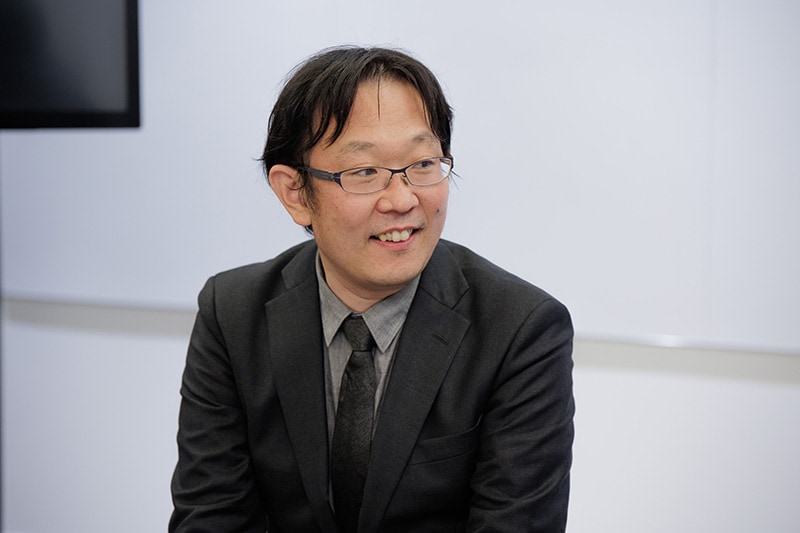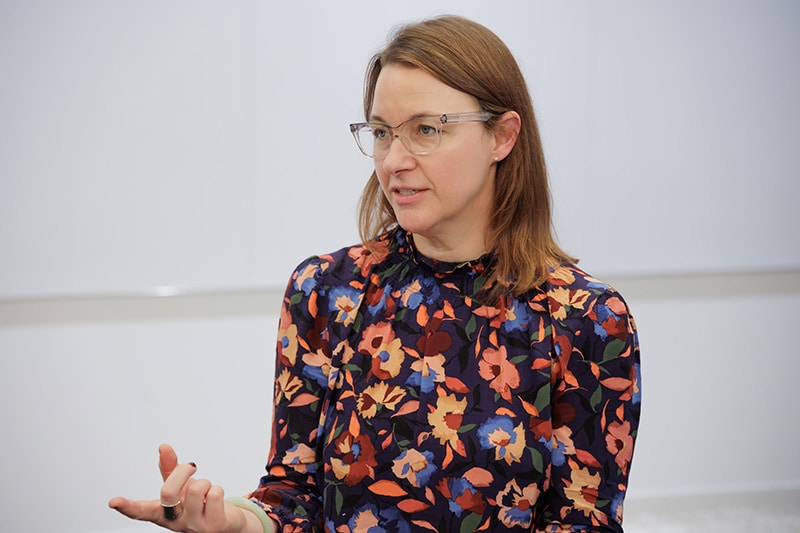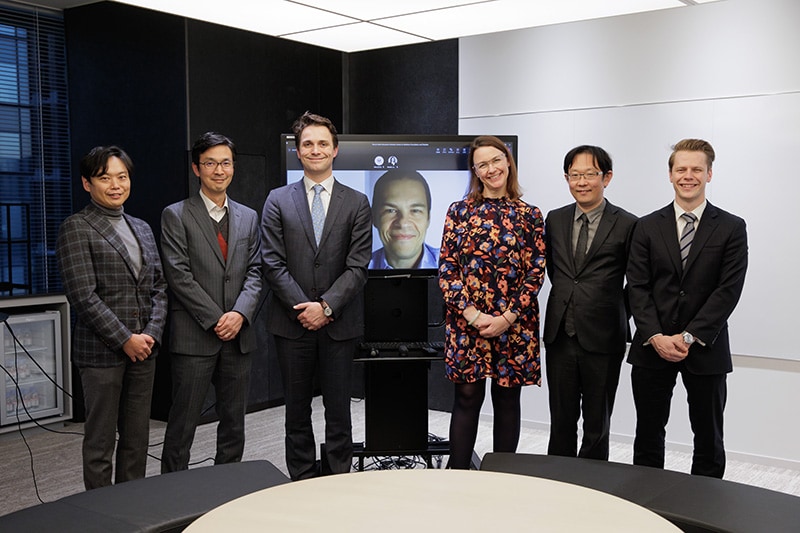The Access to Medicine Foundation analyses actions taken by the world’s top 20 pharmaceutical companies to improve access to their essential healthcare products in low- and middle-income countries. Based on their access-to-medicine initiatives, these companies are ranked by the Access to Medicine Index, with the latest edition of the Index published in November 2022.
As part of the launch of the 2022 Access to Medicine Index, experts from the Access to Medicine Foundation visited Japan and joined professionals in the Life Sciences field at Deloitte for a roundtable discussion focusing on the “Vision for the future of Access to Medicine”.
Current situation of "Access to Medicine" ~Remaining challenges in low- and mid- income counties~
The Access to Medicine Foundation analyses actions taken by the world’s top 20 pharmaceutical companies to improve access to their essential healthcare products in low- and middle-income countries. Based on their access-to-medicine initiatives, these companies are ranked by the Access to Medicine Index, with the latest edition of the Index published in November 2022.
As part of the launch of the 2022 Access to Medicine Index, experts from the Access to Medicine Foundation visited Japan and joined professionals in the Life Sciences field at Deloitte for a roundtable discussion focusing on the “Vision for the future of Access to Medicine”.
Taichi Kido, Director of Deloitte Tohmatsu Consulting
What do you think about the current global situation regarding access to medicine, especially in low-income and developing countries?
Marijn Verhoef, Director of Operations and Research, Access to Medicine Foundation
Having started to improve access to HIV medicine in sub-Saharan Africa 20 years ago, the movement has expanded to other communicable diseases, including malaria and tuberculosis. In recent years, the focus has expanded towards non-communicable diseases, including diabetes, cancer, and cardiovascular diseases. Over the years, companies have become more collaborative, partnerships with non-profit organisations have been established, and governments around the world have gained a better understanding of the topic.
Access to medicine is not just about financial matters. Rather, it is about infrastructure. For example, if a facility supported by the US President's Emergency Plan for AIDS Relief (PEPFAR), which brought a lot of positive impact to sub-Saharan African countries for HIV/AIDS patients, would be made available to diabetes patients, the care for diabetes patients can improve significantly.
Takeshi Haeno, Partner of Deloitte Tohmatsu Consulting
Echoing your point, infrastructure is important. The “last one mile” for access to medicine is all about operations and infrastructure, and we tend to underestimate the importance.

Marijn Verhoef
During the COVID-19 pandemic, many healthcare initiatives were scaled down to focus resources on COVID-19 treatments, diagnosis and vaccinations. As a result, the attention on other diseases decreased.
There are, however, positive gains from the pandemic. The last one mile became connected, with international consortia working together to deliver vaccines, treatments and tools to even the most remote areas globally. While vaccination rollout was not carried out equitably, or at the same time around the world, it has improved access to medicine. If we can deliver vaccines around the world, stored at minus 70 degrees, we should be able to do the same for refrigerator or room temperature products.
Takumo Yamada, Senior Specialist Lead of Deloitte Tohmatsu Consulting
My observation is that access to medicine receives more attention within countries with high levels of health inequity, many of which are middle-income countries, and also between high-income and low-income countries. But health inequity is also an issue in some high-income countries, notably the US. Compared to Japan and European countries, where there is a strong public health financing system geared towards equitable access, the issue of access to medicine becomes more of a political issue against the backdrop of a high degree of health inequity.
Stephane Bazoche, Partner of Monitor Deloitte, Paris
Access to medicine is an essential issue that needs to be tackled moving forward if we want to be able to reach the 2030 United Nations Sustainable Development Goals related to health. This includes the end of epidemics such as HIV and malaria. But it also includes reducing premature deaths related to non-communicable diseases, such as cardiovascular diseases and cancer, by 30%. And while we have in the past observed a significant decrease of deaths related to infectious diseases in low- and middle-income countries, we observe quite the opposite with non-communicable diseases, especially cancer. Seventy percent of people who die from cancer live in low- and middle-income countries, and the percentage is increasing year after year. However, a large number of these countries still don’t have access to existing treatments that could save or improve the life of patients, especially innovative drugs.

Taichi Kido
Access issues differ between communicable and non-communicable diseases. For example, chronic diseases such as diabetes require continuous treatment for relatively longer durations. So, the challenge is not only drug provision, but also maintaining healthcare.
Initiatives by muliti-national big pharmaceutical companies ~Shifting from CSR activity to next phase~
Karen Eryou, Head of Industry Engagement, Access to Medicine Foundation
In the Access to Medicine Index, one company’s ranking may go up and another may go down, but the industry at large has been improving. As we measure progress, it is not just the last one mile, as pointed out earlier, but we are in the last one metre where the medicine reaches patients’ hands.
In the past, pharmaceutical companies would have been more reluctant to partner with public or private organisations, let alone with their peers. With the COVID-19 pandemic, however, we saw that change. There is a societal expectation that pharmaceutical companies need to collaborate to solve this very difficult global problem. Companies used to ask us “why should we do this?” Now, they are asking us “How can we do this?” and “what are best practices?” Now there is a new era of collaboration and partnership.
In addition to societal expectation, employees are keen on this topic. They want to work for a company that has a purpose. They want to be involved.

Takumo Yamada
Employee expectation for sustainability-oriented business is a historical phenomenon and is on the rise across industrial boundaries. But if there is a uniqueness in the sustainability agenda facing pharmaceutical companies, it is probably that while other industries are asked to reduce or eradicate negative side effects of their operations and manufacturing processes, stakeholders see pharmaceutical products as intrinsically positive for sustainability – and they demand that the availability of the products be expanded equitably so that no one is left behind.

Takeshi Haeno
In the past, access to medicine was somewhat considered as “charitable activities”. Now the topic is more about “activities to create a social value”. The paradigm shift potentially allows companies to engage in improving access to medicine in a financially sustainable manner.
Marijn Verhoef
Moving away from just pure philanthropy, access to medicine has become more embedded in a company’s business model. “How can we establish a sustainable business model even in low-income countries, rather than seeing it as a charity?” “How can we make the business at least cost neutral, if not profitable?” Companies are really exploring these topics and coming up with creative solutions, by, for example, bundling different countries and regions in their P&Ls, or ringfencing certain units to give them advance investments.
Taichi Kido
Are perceptions of companies and investors on the Access to Medicine Index changing?
Bram Wagner, Investor Engagement Officer, Access to Medicine Foundation
The COVID-19 pandemic has increased awareness among investors about the risks and opportunities associated with access to medicine, with the risks related to not having access becoming more evident. These are not only related to the systemic risks that pandemics pose to the global economy – and the social costs associated with a lack of access to medicine – but also risks related to, for example, government intervention in pricing and patent rights. Many believe investors also have an obligation to conduct due diligence on human rights related to their investments, including the right to health. At the same time, looking at the broader responsible investment community, most of the focus is still very much on environmental issues, with little attention on healthcare.
Marijn Verhoef
The engagement of investors is increasing, both quantitatively and qualitatively. Six or seven years ago, it was mostly ethical and value-driven investors, such as faith-based investors, who would listen to what we had to say. But for the past four years or so, we’ve also seen an increased level of attention from mainstream investors. And with the heightened attention from investors, corporate leaders are becoming more open to disclosing information on this topic.
The Access to Medicine Index measures 20 companies. Companies may be hesitant in disclosing or sharing certain information with us. I would like to emphasise the added value the Index provides for companies, employees and shareholders, in that the Index works as a centralised repository of information of these 20 companies. As companies operate globally, they sometimes do not know what is happening in other regions or subsidiaries. The Access to Medicine Index motivates the companies to aggregate internal information, understand activities on the ground and communicate good causes to investors and markets. This also brings heightened awareness among employees and encourages them to leverage best practices, while directly helping employee motivation as they learn how their company is contributing to the good of society.
Karen Eryou
Companies might not recognise that they have an industry best practice. Sometimes, actions in one part of the company are regarded as so standard that they do not see them as best practices. The benefit of the Access to Medicine Index is to put these practices in the spotlight, so that other companies can learn and improve on what has been tried and tested.
We can also learn from failures. Companies are now more open about what went wrong. It is encouraging to see the spirit of ensuring transparency and collaboration to improve access to medicine. I strongly believe that this spirit is a key aspect of changemaking.
Stephane Bazoche
There is a very positive message about the fact that pharmaceutical companies are doing more and more and taking the topic seriously. We have also observed that a growing number of pharmaceutical companies is using the ranking in the Access to Medicine Index as a key indicator when reporting their performance to their investors. This is a very strong recognition of the Access to Medicine Index, and also encourages strong commitment, as companies know what it takes to improve, or even maintain, their position in the Index.
With such a complex topic, where there is clearly a lack of standardised metrics, the contribution of the Access to Medicine Index is critical. It is a clear reference in assessing the performance of pharmaceutical companies on their action in the area of “access to medicine”. The Access to Medicine Foundation also provides best practices and frameworks that help pharmaceutical companies to improve. Of course, there is still a lot of things to do as some access-to-medicine levers require significant company transformation, such as evolving R&D priorities, the way clinical trials are conducted, or the way pricing is done. Truly embedding access to medicine in the pharmaceutical process still requires some work.
Difference between Japan and Global ~Current status and required actions~
Taichi Kido
How do you see Japanese pharmaceutical companies? Do you feel that Japanese companies are more reluctant in disclosing information or stepping up their efforts?
Marijn Verhoef
I do not see any difference between Japanese and US/European companies in terms of what they share. The difference, if any, is that US and European companies generally tend to announce their commitment on doing “this” and “that” within “this” number of years, while most Japanese companies tend to report their activities after they are completed. This could be a purely cultural difference.
Takumo Yamada
I also observe a difference in the quality of narratives in information disclosure. Western companies face more fierce criticisms from the media and the public with social justice narratives, and thus are more pressured and trained to respond and defend their positions in the same discourse, and their communications eventually become more sophisticated and convincing. On the other hand, Japanese companies are less exposed to such pressure, meaning they often end up disclosing only actions taken without the effective narratives or discourses which would help demonstrate the social value of those actions.
Takeshi Haeno
Japanese pharmaceutical companies may need to strengthen the intelligence function of collecting and analysing activities related to social value. Many of the companies operate globally, and they are faced with media scrutiny comparable to their western counterparts. Do the headquarters in Tokyo capture all the information and successfully respond to them? To be better prepared and respond to challenges for society in a strategic manner, companies need to further strengthen an information intelligence function to capture developments around the world.
Takumo Yamada
Japanese companies also need to expand their strategic timeframe. If companies set a long-term strategic horizon of, say, 10 to 20 years from now, they would see it as business imperative to seek and enter new, non-traditional markets including in Africa in order to maintain revenue, since the market in Japan will only shrink from now on as the population declines. But since they typically strategise with a three-to-five-year timeframe, that imperative does not become obvious to them, and the risks associated with emerging and low-income markets remain ones to be avoided, rather than overcome.
Takeshi Haeno
In 20 years, some of today’s emerging countries can be more mature markets. So, the initial step of creating the last one mile or last one metre of medical access can potentially be good investments. The notion of participating in creating markets is well understood but, in practice, they sometimes ask “what is the return in the short term?” Deloitte has a framework of “Zoom-out/ Zoom-in”, which underscores the importance of setting long-term aspirations and linking it to immediate actions. As the framework suggests, I believe we need to set a right mix between a long-term investment for market development and short-term business activities for immediate financial return.
Marijn Verhoef
We at the Access to Medicine Foundation always advise companies to look at the burden of diseases – which specific diseases cause a higher burden on which countries? In the case of lung cancer, for example, we see more room for improvement in Southeast Asia where the burden of the disease is the highest. While meeting unmet medical needs in those countries, companies can expect higher volumes of sales and leverage the economy of scale.
One size does not fit all. Each company is supposed to have its own tailored approach to this topic. We need to look at products, countries affected, and the operating model in a country. We recommend companies start with a country where they have experience and expand efforts gradually from there. Rather than trying to have all products in all countries at once, we tell them to focus on what they can achieve in a year or two.

Karen Eryou
What we would tell them is to start with prototypes – you do a prototype to fail fast and learn lessons quickly. This is how they can de-risk new ventures. Partnership is also important for these new ventures. Knowing how to start new projects with decreased risks can help companies try something unprecedented and move forward.
We must also note that the risk appetite of a pharmaceutical company is different from the risk appetite of the country in general. It can be the culture of the company, not the country. When we offer advice, we do not look at companies as Japanese or Western. What is the most plausible action for a company? What does this company offer that can help underserved populations?
Stéphane Bazoche
We can see different levels of maturity. There are so many ways of developing access plans and there are so many products and portfolio profiles... So, whether Japanese or not, it really depends on companies. Some are willing and able to go faster, to mature quicker, than others.
Karen Eryou
Companies are looking for examples. If a leader moves and paves the way, a cohort will follow the first mover. The examples can be inspirational, and lessons can be learned.
Taichi Kido
What could be a trigger for Japanese companies to step up their efforts on access to medicine?

Karen Eryou
Participating in the Access to Medicine Index is a commitment for companies. Even tasking a small department to focus on collecting information for the Index can be an investment in access to medicine, as the company is performing a detailed review of its practices. Japanese companies have been dedicated in their commitment to participation in the Index.
While donations of medicines in a humanitarian crisis are an important part of access plans, there
are many other ways to step up access efforts – dedicating resources, bringing in talents, partnering, knowledge sharing, working on pilot projects and building up more appetite for innovation are key areas for companies to address.
For companies, access to medicine needs to be, in the end, reasonably profitable and sustainable. They have to meet the expectations of stakeholders. For this, collaboration and partnerships among internal resources, peers and other stakeholders like the Access to Medicine Foundation must work.
Marijn Verhoef
Convincing companies on access to medicine alone does not work. We need to equally engage stakeholders to catalyse the progress by companies. This year, we published two reports, one on access to insulin and the other on appropriate access to antibiotics. For the first time, we clearly laid out that there is a limit to what pharmaceutical companies alone can do, and that stakeholders need to be involved. For example, if it takes five years to have a new medicine registered in one country, it is not only the fault of pharmaceutical companies that access is delayed. In fact, South Africa was notorious for its slow approval process. Despite a lot of patients with very high medical needs, the situation was very demotivating for companies. Then, in response to conversations with global health stakeholders, including the Access to Medicine Foundation, the country significantly shortened the registration process from five years to a little over one year. As soon as this happened, an Indian pharmaceutical company I recently spoke to filed as many as 30 initial products for registration. It shows that other stakeholders’ actions can catalyse the move forward by companies.
Another big topic in recent years is clarity on demand. Even if a company is ready to supply more products in one country, it cannot move unless the demand in the country is clear. It is only when other stakeholders, like governments, international health organisations and the World Health Organization (WHO) get involved and share information on the demand, that companies supply accordingly and can improve access to medicine.
That said, the mindset of a company should still be “we are going to do this irrespective of stakeholders’ involvement”. When we analyse companies for the Index, we look at what a particular company can do independently, irrespective of anyone else. We do not consider situations where companies can take action only after someone else takes the first step. There are hurdles, and there may or may not be involvement of other stakeholders, but pharmaceutical companies should maintain a mindset of continuously making a larger and sustainable impact on their own.
Suggestion for improvement of Access to Medicine ~Expectations for each stakeholder~
Taichi Kido
You are talking about the importance of coordination. Someone has to take on such a coordinating role in promoting access to medicine, but who will that be?
Marijn Verhoef
Coordination at the regional and country level is happening. For example, the South African Development Community or the Pan American Health Organization in Latin America are taking responsibility for procuring medicine in a coordinated way. It is important that pharmaceutical companies are aware of these moves and, at the same time, WHO and other organisations need to be aware of initiatives taken by companies. Furthermore, there is coordination but there is not enough communication. We need to promote the topic of access to medicine at international conferences, such as G7 in 2023, where people come together from around the world.
Taichi Kido
Access to medicine has been said to be a trade-off with business. From a financial perspective, how should we consider access to medicine?
Marijn Verhoef
Let me talk about two aspects of that: companies’ responsibility towards shareholders, as well as employee recruitment and retention.
Shareholders often expect innovative pharmaceutical companies to produce higher profit margins than other sectors and, given fiduciary duties to shareholders, corporate leaders are reluctant to engage in businesses that do not necessarily offer a high profit margin. We need a shift of mindset among shareholders and investors. They need to willingly accept the fact that margin in low- and middle-income countries may not be as high as margins in Japan, Europe, and the US. The company needs freedom to scale the volume of low-margin products. There still is a large mindset gap to be closed.
In terms of employee recruitment and retention, access to medicine has direct consequences on business results. Employees do not just promote business from a financial perspective. They do care about the long-term value of the company and what good the company does. The topic of access to medicine has huge impacts on talent retention, especially with the younger generation who care more for sustainability and doing good for the planet.
Bram Wagner
With ESG investing becoming more mainstream, most now agree that ESG considerations fall firmly within the fiduciary duties of investors, and we are seeing more investors considering the impact of social returns.
We should not forget that improving access to medicine does drive to the long-term growth of business. The growth in the pharmaceutical industry in the last decade has been largely based on the increase of pricing in the higher-income countries, but we know this is not a sustainable way of growing a business. If companies want to keep improving their bottom line, they have to unlock new growth in emerging markets. In order to do this, reliable supply chains, productive and talented workforces, and meeting expectations of local communities will be necessary. Companies that take these factors into consideration are better positioned to receive a strong social licence to operate in these markets and to grow their business in the long term.

Stephane Bazoche
It is difficult to compare and to demonstrate the impact of access-to-medicine performance on a company’s financial metrics, as there are many factors that can have an impact. However, it has been observed in the past that the cost of capital, be it the cost of equity or the cost of debt, can be lower for companies demonstrating high ESG performance. This could be a trigger.
In addition, the best performers in the Access to Medicine Index clearly leverage this position in their corporate communication; it improves their reputation and relationship with all kinds of stakeholders, including investors. It can have a clear business impact, for instance in relations with healthcare authorities, or large international organisations.
Takeshi Haeno
Totally agree. Currently ESG has become one of the major projects for Monitor Deloitte. I think this trend focusing on not only a financial perspective, but also on ESG, will become more common in the near future. And this is what pharmaceutical companies should keep in mind when considering their sustainable growth.
